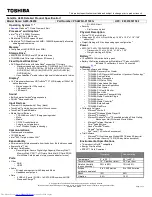
Note:
When you connect an external display, a video interface cable with a ferrite core is required.
1. Connect the external display to an appropriate video connector on your computer, such as the
HDMI connector.
2. Connect the external display to an electrical outlet.
3. Turn on the external display.
If your computer cannot detect the external display, do the following:
–
For Windows 7:
Right-click on the desktop, and then click
Screen resolution
➙
Detect
.
–
For Windows 10:
Right-click on the desktop, and then click
Display settings
➙
Detect
.
•
Connecting a wireless display
Note:
To use a wireless display, ensure that both your computer and the external display support the
Wi-Di or Miracast feature.
–
For Windows 7:
Start the Intel
®
Wi-Di program. Select the desired wireless display in the list and
follow the instructions on the screen.
–
For Windows 10:
Do one of the following:
– Open the Start menu and then click
Settings
. If
Settings
is not displayed, click
All apps
to display
all programs, and then click
Settings
➙
Devices
➙
Connected devices
➙
Add a device
.
– Click the action center icon
in the Windows notification area. Click
Connect
. Select the desired
wireless display and follow the instructions on the screen.
For more information, refer to the Windows help information system.
Choosing a display mode
You can display your desktop and apps on the computer display, the external display, or both. To choose
how to display the video output, press the display-mode switching key
and then select a display
mode you prefer.
There are four display modes:
•
Disconnect
: Displays the video output only on your computer screen.
Note:
Depending on the situation, you might see
Disconnect
,
PC screen only
,
Computer only
, or
Disconnect projector
.
•
Duplicate
: Displays the same video output on both your computer screen and an external display.
•
Extend
: Extends the video output from your computer display to an external display. You can drag and
move items between the two displays.
•
Projector only
: Shows the video output only on an external display.
Note:
Depending on the situation, you might see
Projector only
or
Second screen only
.
Note:
If you show DOS or programs using DirectDraw or Direct3D
®
in full-screen mode, only the main
display shows the video output.
Changing display settings
You can change the settings for both the computer display and the external display. For example, you
can define which one is the main display and which one is the secondary display. You also can change
the resolution and orientation.
To change display settings, do the following:
36
ThinkPad 11e 3rd Gen and ThinkPad Yoga 11e 3rd Gen User Guide
















































